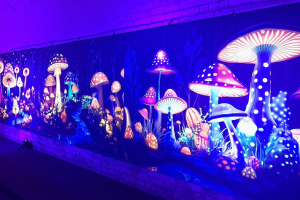REVIEW: The Magic Flute
March 1 – 3, Adelaide Festival Theatre.
In The Magic Flute, Australian opera director Barrie Kosky presents a striking interpretation of Wolfgang Amadeus Mozart’s classic opera in collaboration with the German Komische Oper Berlin and live action animation by London’s 1927. With music by our very own Adelaide Symphony Orchestra, it’s an audio-visual extravaganza set to an iconic soundtrack.
The show is an eccentric clash of Gatsby-era vaudeville, silent film vibes and 21st century technology—a love story raging with the kind of antiquated gender dynamics you’d expect from an opera written in 1791.
The Magic Flute premiered in Vienna just two months before Mozart’s premature death at the age of just 35. The show was an instant hit and has remained a cherished work for audiences globally ever since.
Quips about capturing feeble-minded women might make you cringe. You can dismiss some of it as a product of its time, forgive most of it for its enduring value as a piece of classical music history, and laugh at the rest.
The set—a simple white wall with revolving panels—is a blank canvas for the live stream animations that are meticulously crafted. The cast interacts with the animation seamlessly, exhibiting outstanding attention to detail and artistry. Papageno plays with a prancing animated cat, while Sorastros holds his deadly dogs at the end of a cord.
The stage is at once an enchanted forest, then the stomach of a deranged serpent, and then the whirring steampunk mechanics of the human brain.
In the story, we see Prince Tamino lusted over by three attendants of the Queen of the Night as he’s coaxed to save her daughter Pamina from the evil high priest Sarastro.
Soon Tamino meets the mischievous, amorous Papageno. We see him fantasising about his future lover with a cast of trippy pink elephants dipping in martini glasses. Later, he’s dashing across the rooftops with Pamina, and then hanging off a brick wall that grows thick with blue and yellow flowers.
Tamino is gifted a magic flute, personified as a twinkly tinker-bell, and Papageno a case of magical bells. At various times in the journey, three choirboys depicted as heavenly butterflies float into the scene, offering sage advice to our heroes.
While The Magic Flute was originally a singspiel—with both speaking and singing parts—the spoken elements in this show are presented like narrative projections as in silent films.
See it for the dazzling animations, charming costumes and dreamy, timeless (if sometimes bizarre) storyline. Or see it simply for the thrill of hearing ‘The Queen of the Night’ sung live (by a giant matriarch-spider, no less).
The festival suggests to bring children, but kids under 10 may get restless sitting for 2 hours and 40 minutes (including 20 minute interval). It’s presented in German so any children in tow should be confident readers to follow the English surtitles on screen.



